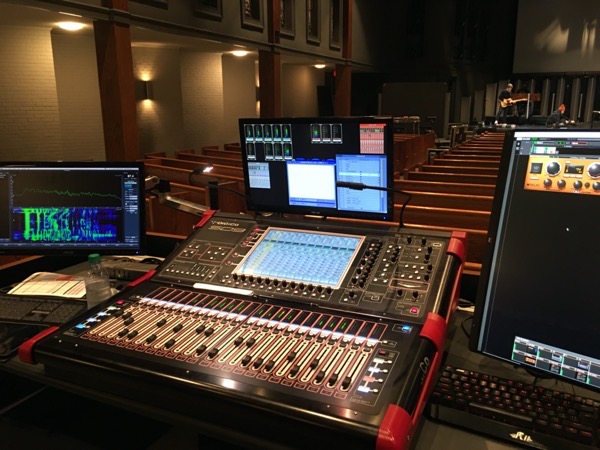
Quality or Capabilities

When you’re thinking about improving the audio in your church, what are you most concerned with? What is your greatest priority, and what are you hoping to accomplish when you spend your money?
To me, there are generally two major goals most people are after: quality improvements and/or capability improvements. I think hitting these goals often requires different investments so let’s examine this a bit. Equipment upgrades are often the first thing that comes to mind in regards to this so let’s start there.
Most equipment upgrades fall into the category of Capability Improvements. There’s definitely a bit of overlap between capabilities and quality. Changing out equipment can improve quality, however, these days most of the sonic improvements with things like microphones, DI’s, and consoles are subtle improvements to a casual listener. To me, I see these as smaller details in a bigger picture. These details definitely matter to me quite a bit, but I generally like to go after the bigger wins first and encourage the folks I’m working with to do the same. Let’s look at an example.
Consider a console upgrade. Most console upgrades in churches today are done to add more capabilities. The most common one is to just get more inputs. Another common one with digital consoles are abilities to save settings and to have more processing available. Adding personal monitoring mixers might be another.
These are essentially capability upgrades. They let someone do things they couldn’t do before. I think it’s important to always keep in mind that just because you can do something new or more of something doesn’t mean it’s going to be better, though. Sometimes having greater capabilities improves quality, but that’s not typically the biggest win with equipment these days. In most cases, I’d probably argue that improving capabilities increases the potential to improve quality, but it doesn’t often improve quality to the extent we want it to.
When we start debating about whether the SSL or the Digico or the Yamaha or the Avid or whatever else is out there sounds “better”, we’re mostly debating tastes. It’s Coke vs. Pepsi. These can be fun and lively discussions with a lot of intense opinions, but let’s not kid ourselves. There is great work being done by all of the major players in consoles these days and even some of the outliers.
Personally, the stuff that bugs me about certain consoles right now rarely has anything to do with sound. It’s all workflow and capability related that drives me nuts. These things sort of affect quality for me in that they slow down my own processes, frustrate me, and create situations where I might be fighting the gear. If I didn’t bounce around on so many different platforms these days, none of this would likely matter, though. I always have much more familiarity with the platform I’m working on the most. A good example of this for me are Digico consoles. I wasn’t initially crazy about working with them, but thanks to their ubiquitous nature right now in Atlanta, I’ve moved well beyond that.
Now, where I think equipment does improve quality usually comes from a couple of specific situations. The first would be existing equipment that is at or beyond it’s “end-of-life”. If the equipment is old and failing or starting to fail, swapping it out for something new is very often a big improvement.
Another area where equipment improves quality is when the equipment wasn’t properly designed or spec’ed in the first place. For example, a big place I see this is with PA’s and acoustic treatment. If your existing loudspeaker system doesn’t provide adequate coverage, changing it out or augmenting it to one that is properly designed will improve the quality.
So how do you improve quality?
In my opinion, the best way to improve quality is to improve you and/or your team’s SKILLS. These are improved through things like training, coaching, and practice practice practice. The problem is this often flies against the “black box” culture surrounding production. A lot of people think from production folks to lay leaders think we can and should just buy a box, and that will make everything better. This rarely works in most cases.
What we do placing microphones, pushing faders, and twisting knobs is ultimately a craft and an art. Improving that isn’t as easy as calling your dealer and ordering it up. It takes time and focus to improve.
There are a ton of resources available to help improve your craft these days from books to videos to podcasts. I don’t think anything compares to having an expert right along side you to help guide you on improving things, though. That’s a big reason why I started traveling around the country training volunteers and staff engineers in churches.
COVID-19 put a damper on a lot of that travel this year, but I’m starting to head back out on the road next month. If you’re trying to improve your mixes in your room and/or your online mix, I’d love to chat. The training I provide is custom tailored to meet you and your team where they’re at, and after five years of being on the road, I have a variety of options available to meet your needs from on-site visits to remote training and coaching.
I often get questions around this time of the year about spreading out costs across this year and next year’s budgets. If that’s something that interests you, please hit me up through my Contact. I will lock you in at my 2020 rate for 2021 if you schedule a visit for 2021 before the end of 2020.
Aside from training and coaching, there is one other thing I mentioned for improving your skills that really just costs time: Practice.
I don’t think the benefit of practice can be overstated. Mixing is not like riding a bike. It needs to be performed repeatedly to improve and maintain skills. The good news is practicing is a whole lot easier to do now thanks to virtual soundcheck capabilities on just about every digital console. If you’re not currently capturing your services and rehearsals using a multi-track recorder or DAW, I strongly urge you to start. Then find some time when no one is around and go practice on your console and PA.
If you can’t find a way to practice in the room, take your tracks home and mess around with them using a DAW. You don’t need a fancy setup. Just play and experiment with the stock plug-ins while using a good pair of headphones. Then take your findings and try them out on your console. I do this all the time to try new things. I also do it to figure out things I could do better the next time I’m in front of a PA. I think it is the next best thing to having an actual band to mix.
Do you have any practice tips for mixing? What has helped you the most in furthering your craft as an audio engineer? Leave me a comment and let me know.

 Previous Post
Previous Post



I got a lot out of your priority mixing concept Dave. Everything matters, but it doesn’t all matter the same. Spend the most time on the things that matter most.